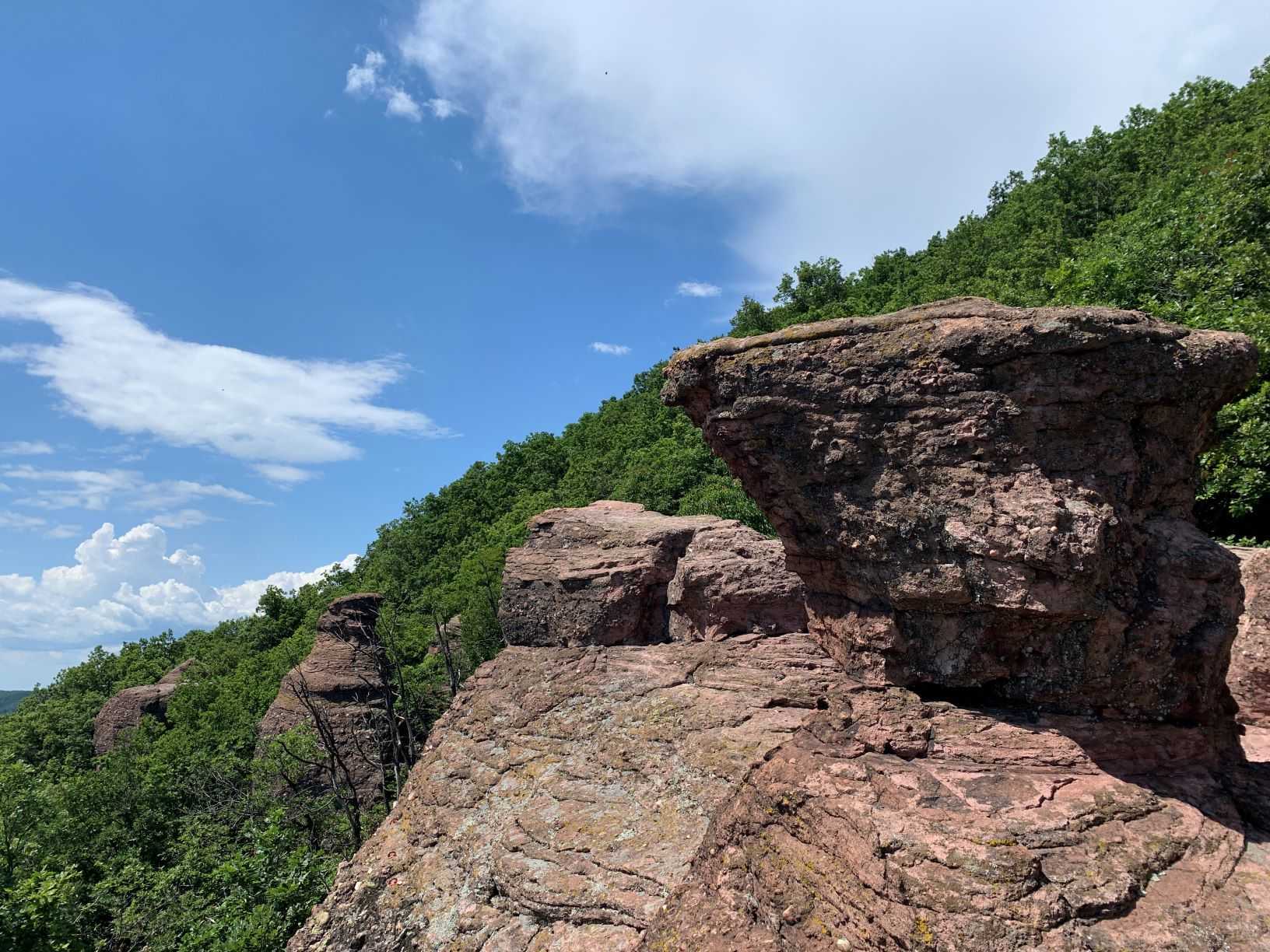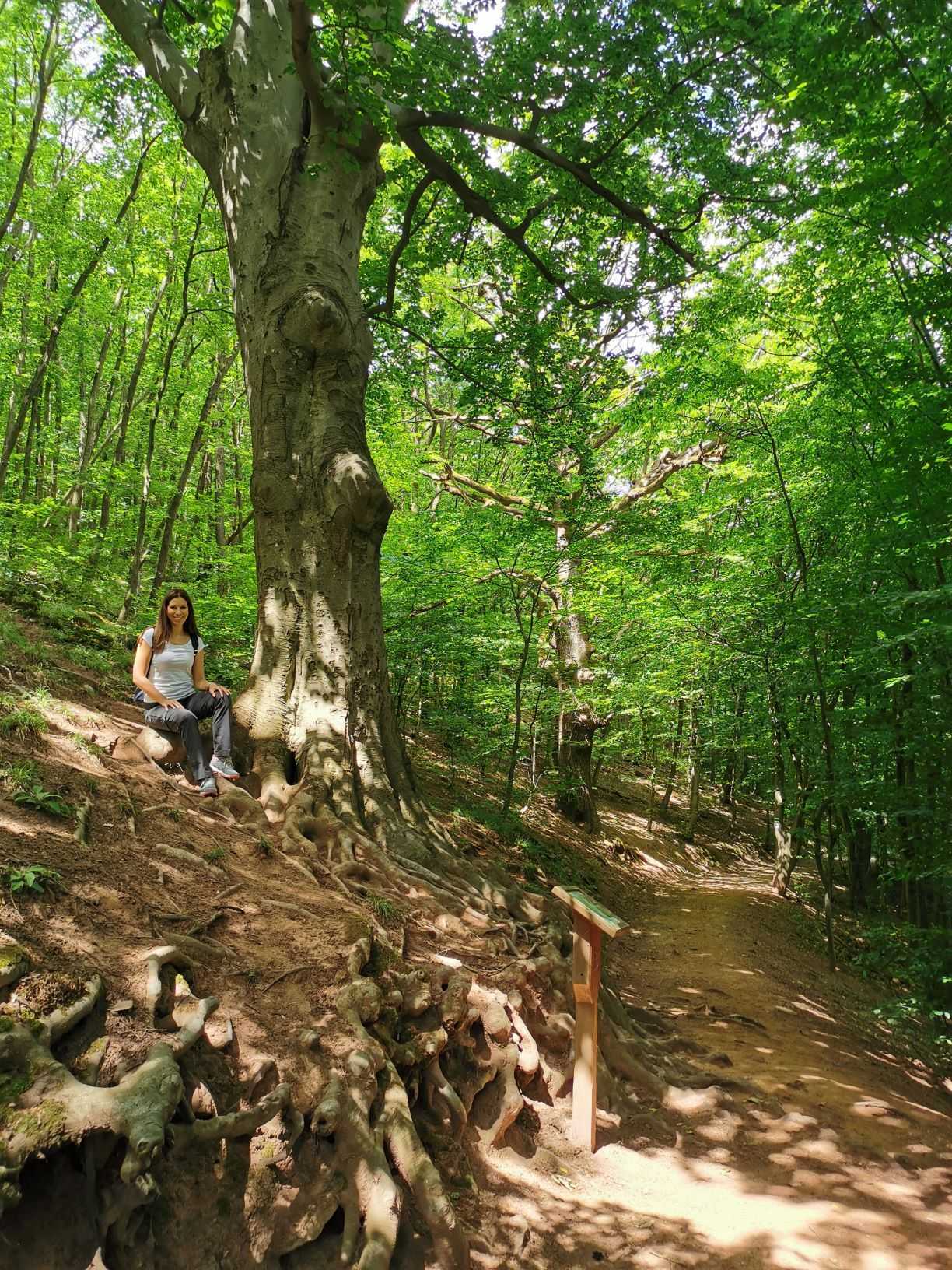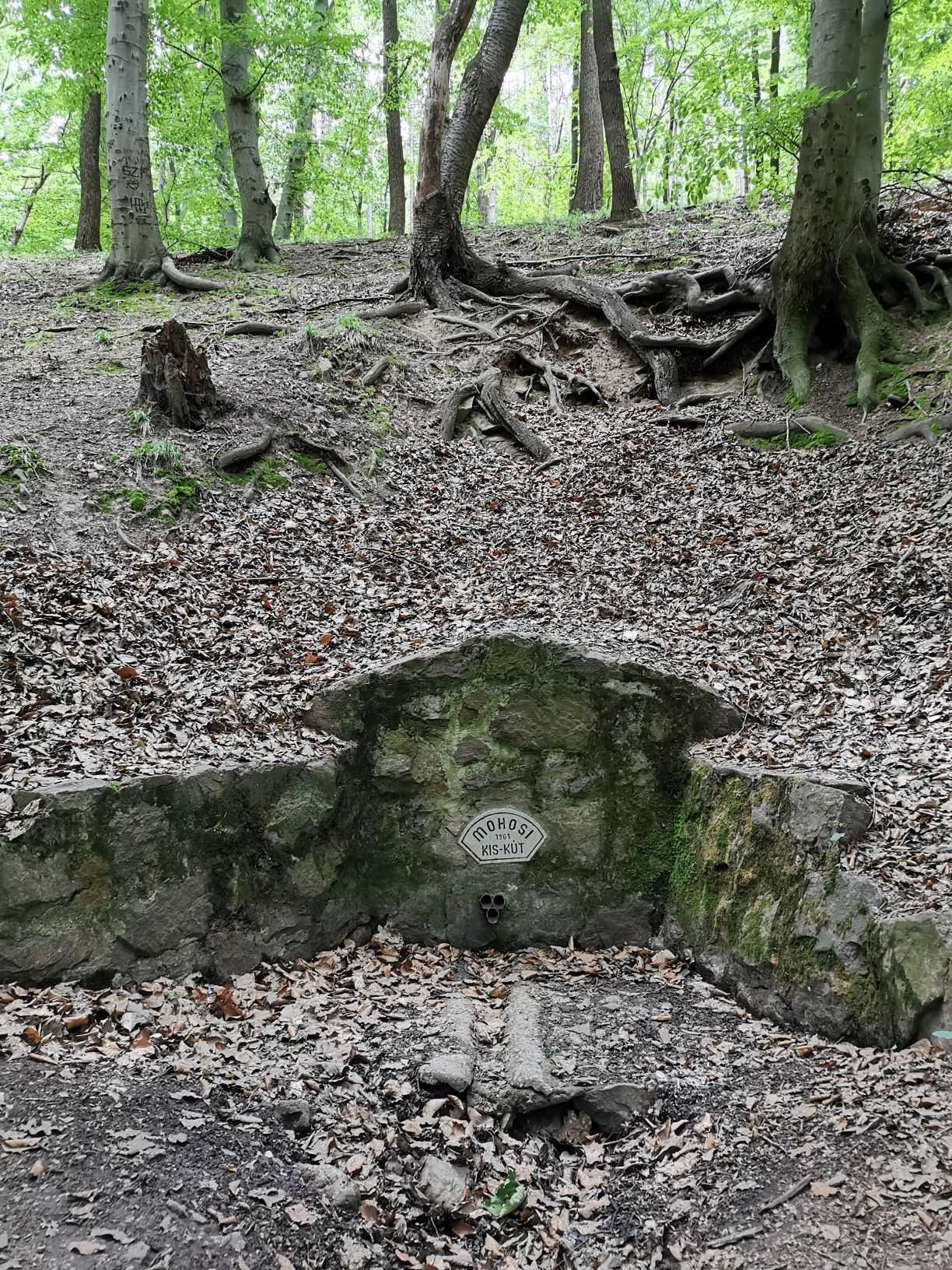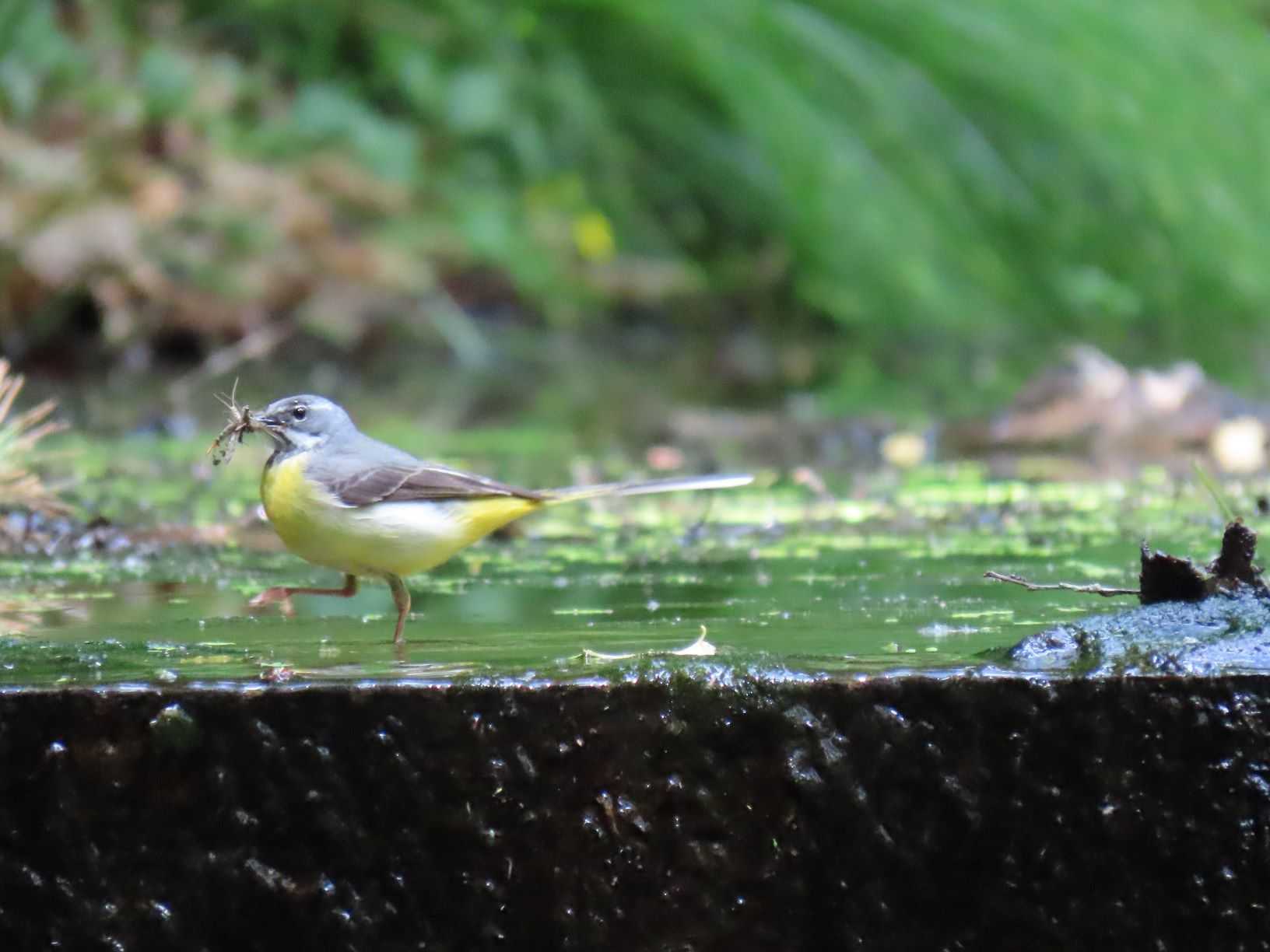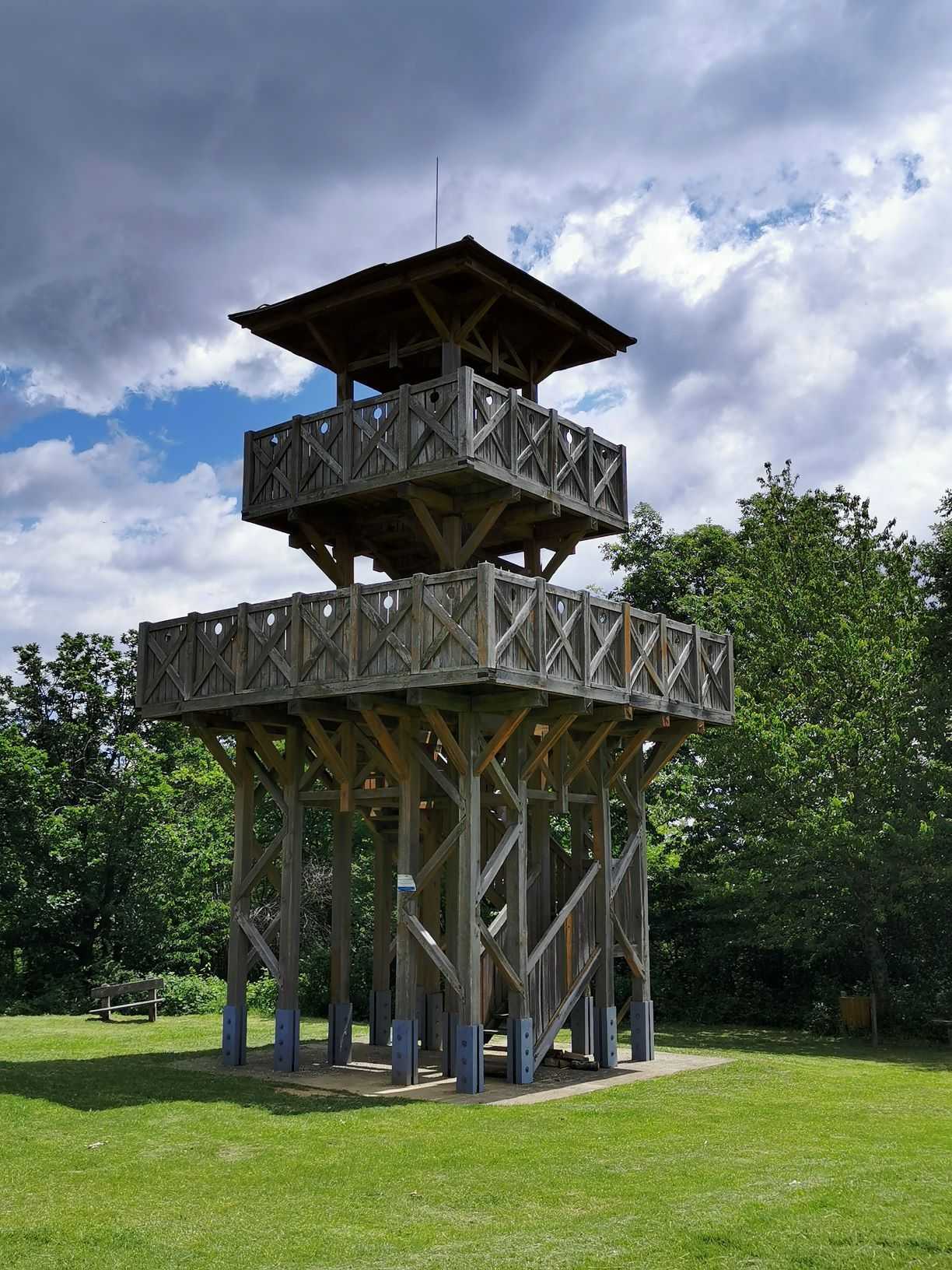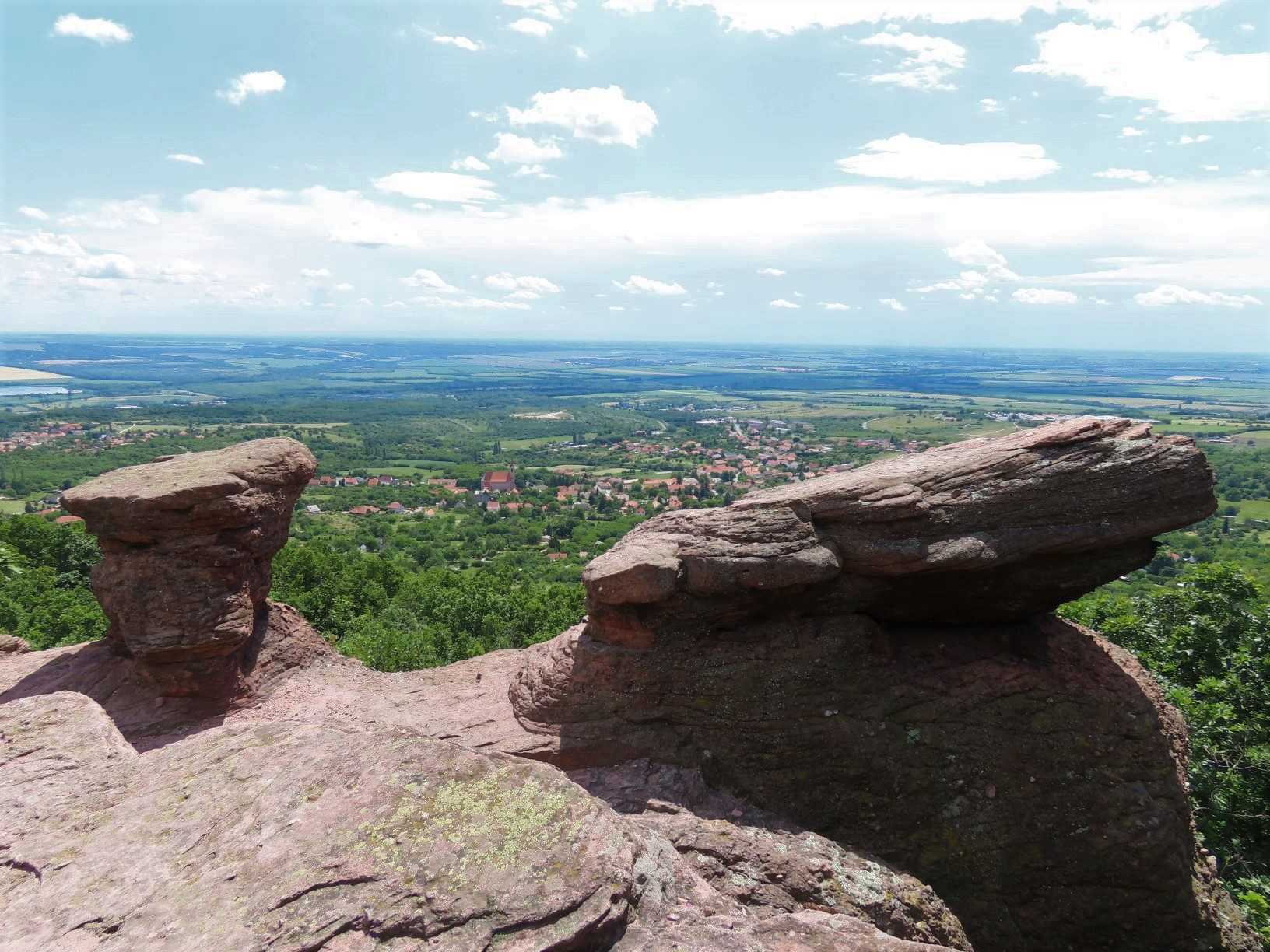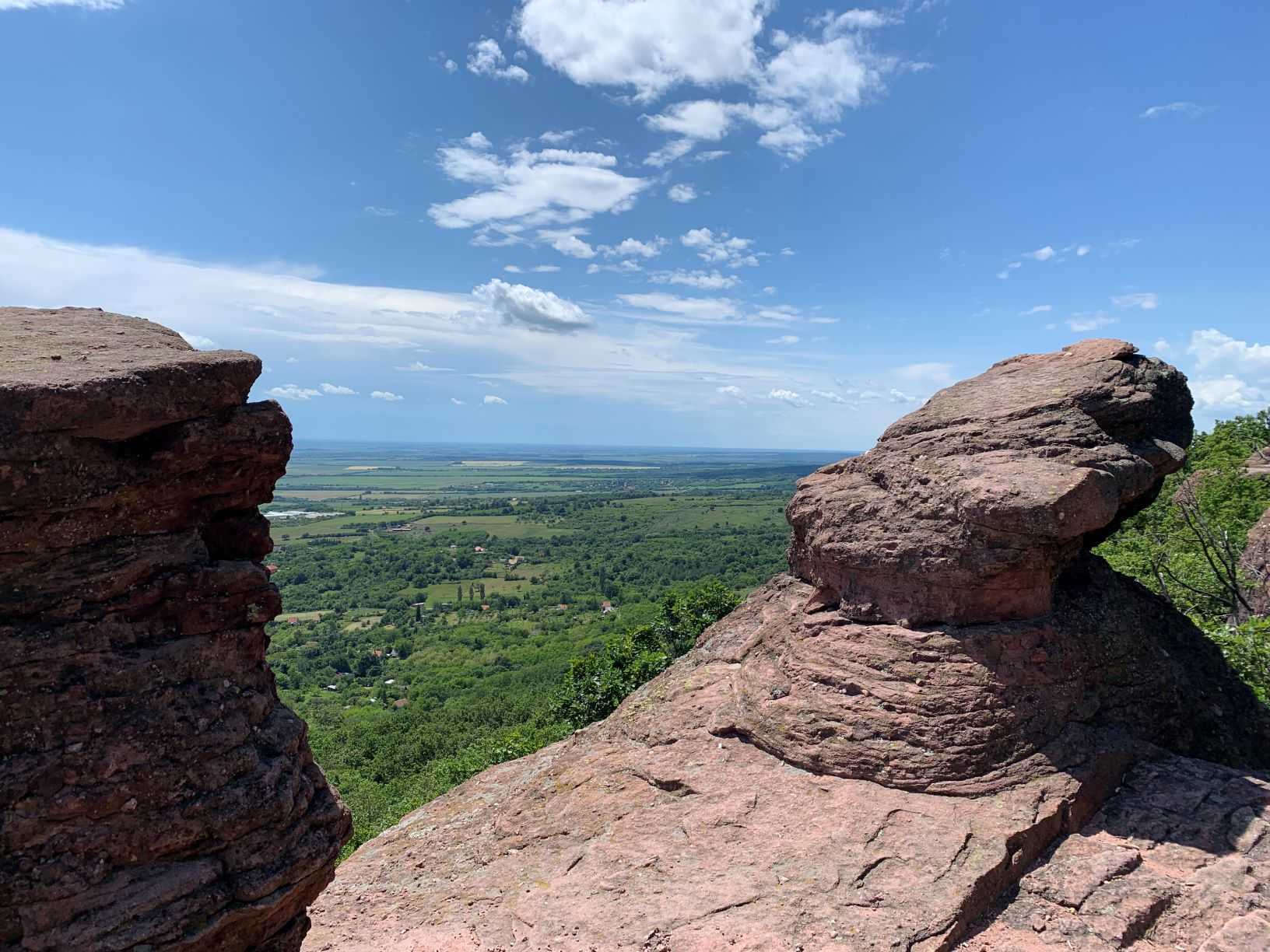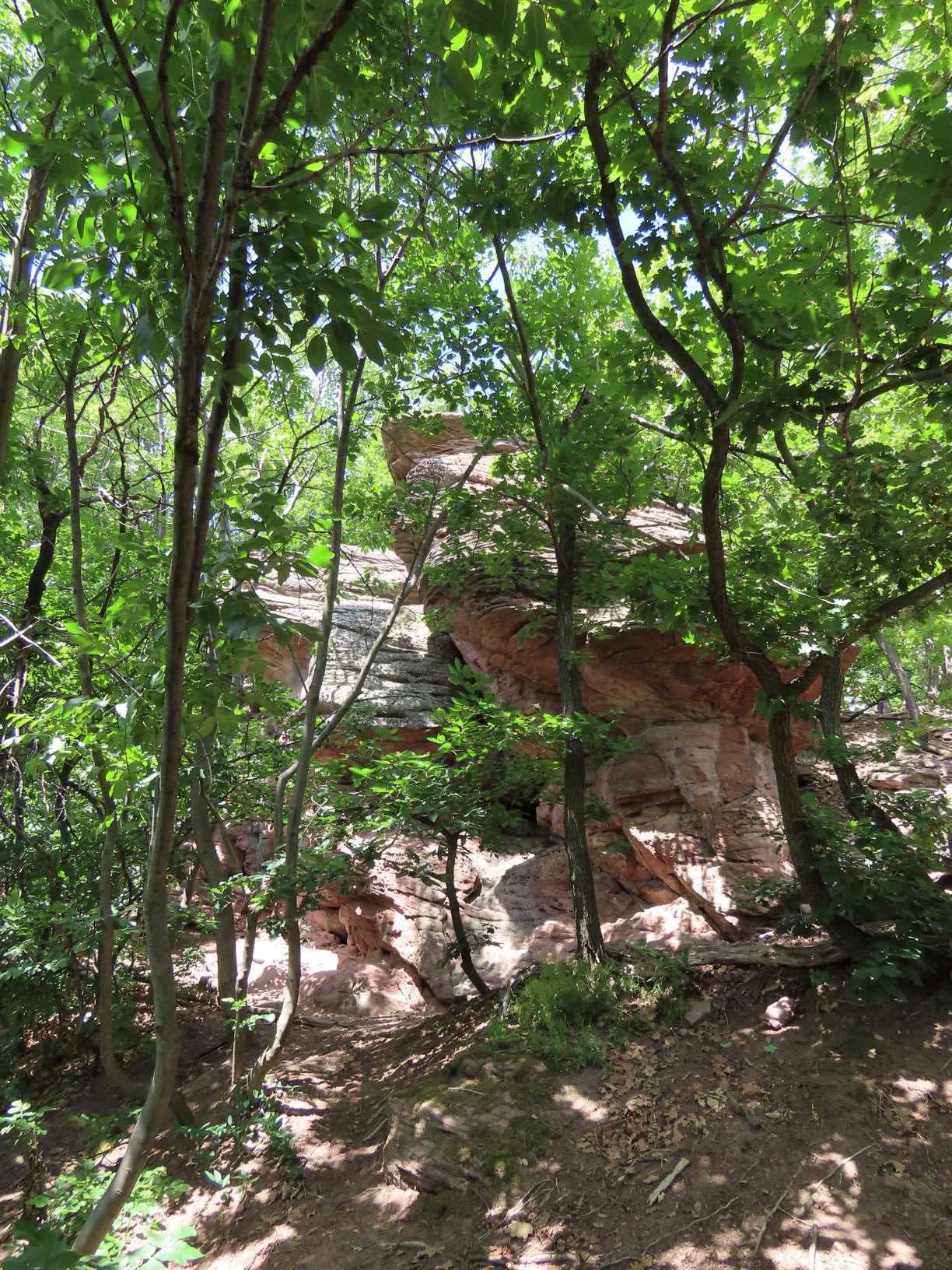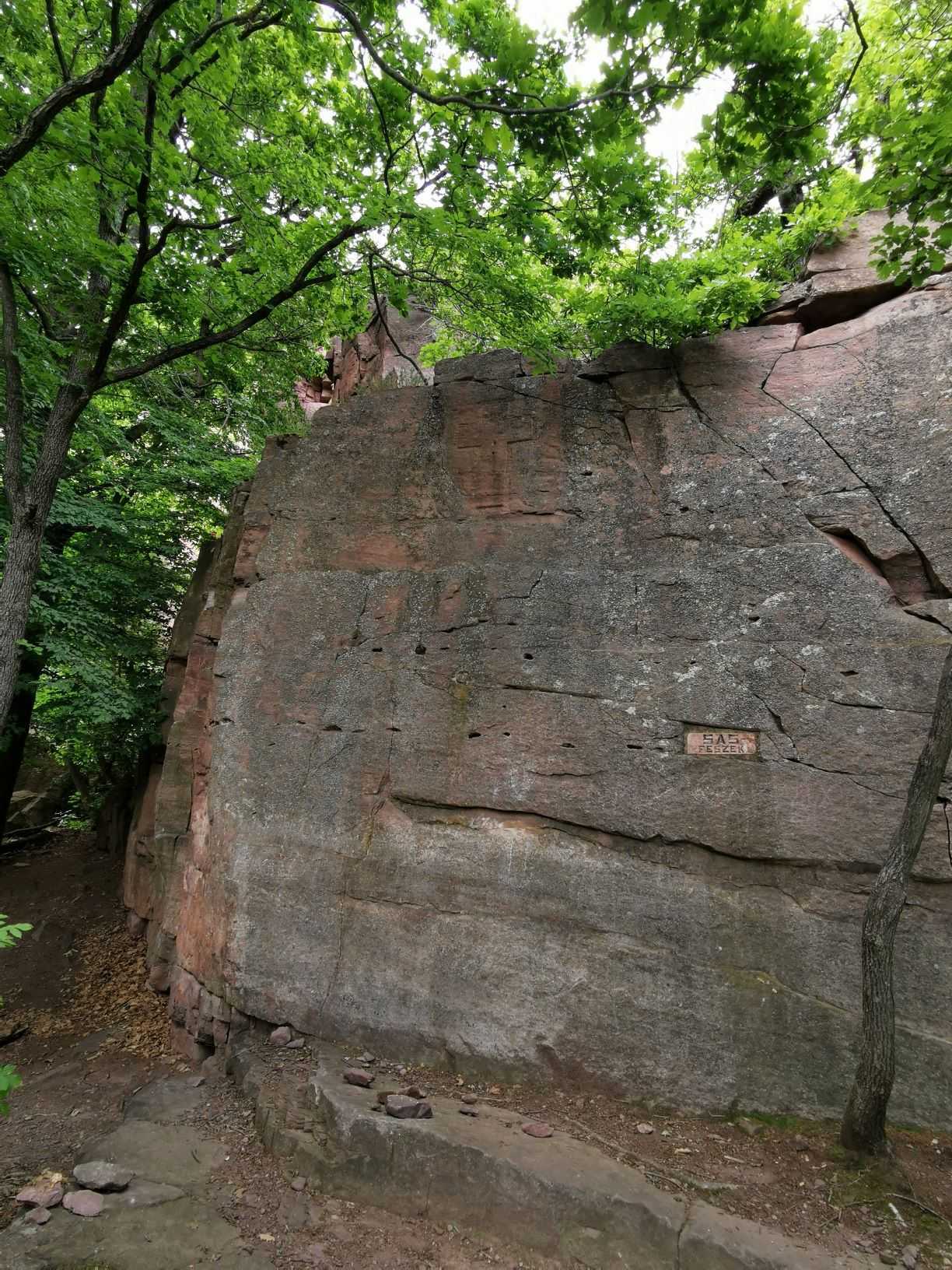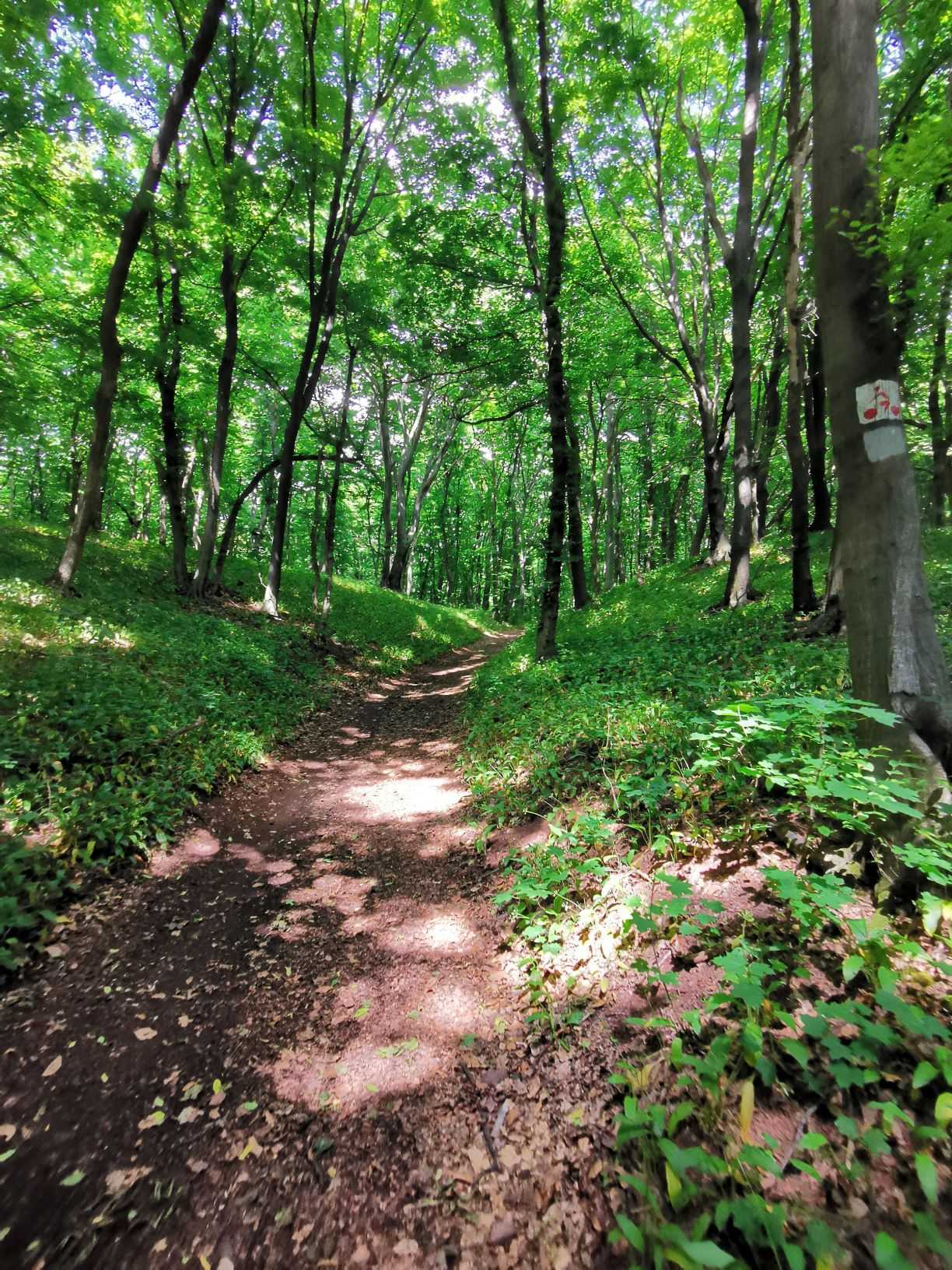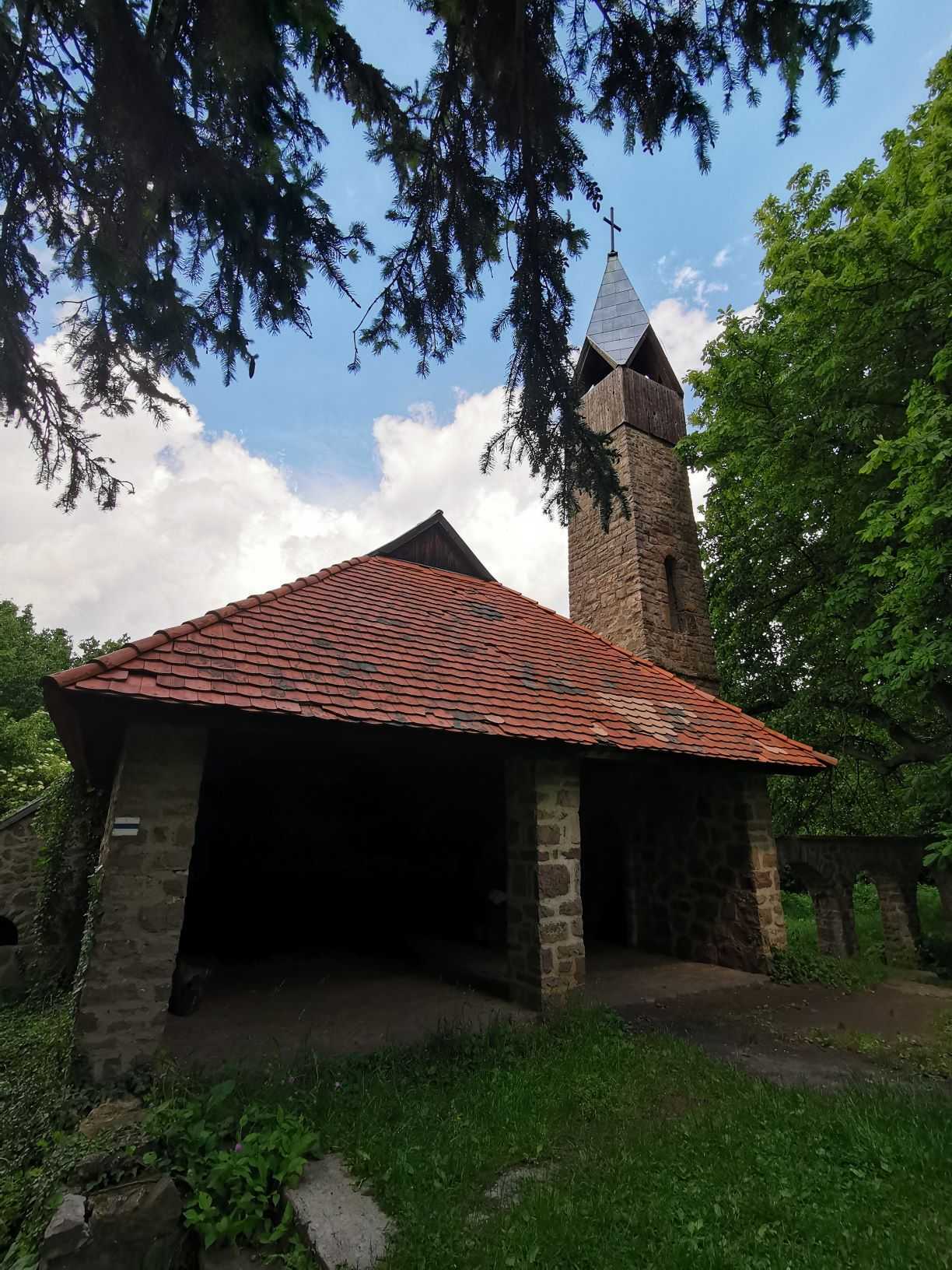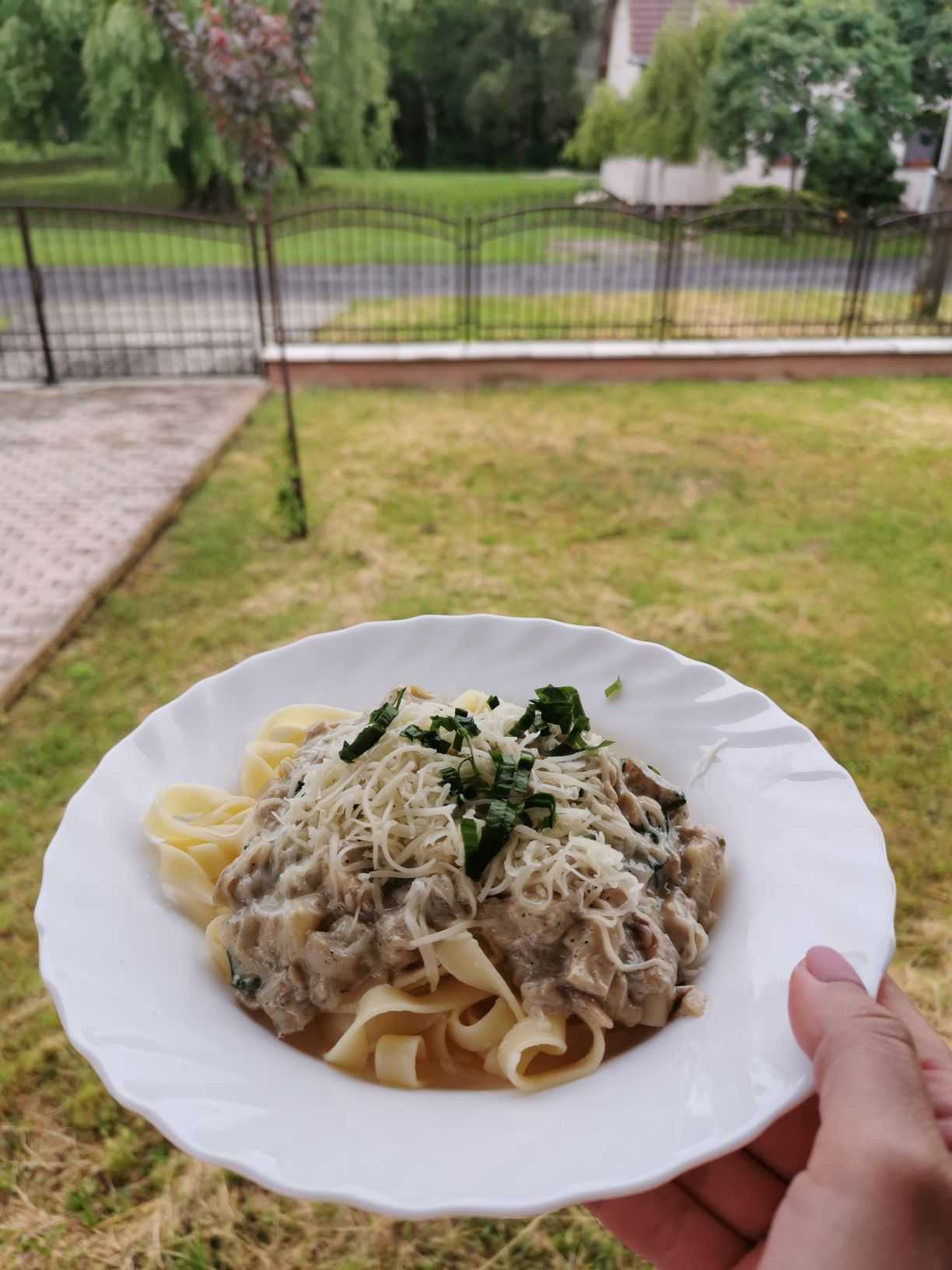When it comes to travel, I’ve always been attracted to lesser-known and non-touristy places with lots of natural attractions. When I first saw these rock formations in a photo, I thought it must have been taken abroad. But, I was wrong, they are located in the Mecsek, where I was traveling instead of my canceled Georgian-Armenian tour (thanks coronavirus). Although I don’t mind it happened so, because then I wouldn’t have gone exploring Baranya county and I wouldn’t be able to tell you the story of this super tour.
In the vicinity of Pécs, most people head to Óbánya if they want to go hiking. The Valley of East Mecsek is indeed a picturesque sight, about which you can read in a separate blog post (here), but now let us adventure west, as our ancestors did. The tour starts at Magyarürögd, at the entrance of the park forest in the Éger Valley, where you can safely leave your car in a parking lot. The total length of the tour is 16 km, it can be done comfortably in 5 hours, the elevation is 450 m.
On the green + sign the path leads into the forest and Éger Valley, where you will see a big lake together with detailed tables of the birds, living here. The green water, which is loud from the sound of frogs in summer, is an artificially designed water well, fed by many sources, such as Mohosi-Kis, Éger and Delelő springs. The water from the springs can be ingested at your own risk, so if you get thirsty on the way, you can refill your bottle at several places.
Next to the lake, there is a tiny waterfall, where a wildlife photographer was trying to catch something. I didn’t understand what is so interesting about babbling. But as it turned out, the subject was a pair of a yellow-bellied flycatcher who had their nest behind the waterfall. It’s worth stopping sometimes, having conversations with strangers, so that we followed our way with this natural miracle.
The other miracle was also given by the forest after the first few kilometers. The previous day’s rains caused mushrooms to stick their heads out of the soil. After we picked some porcini, we continued our journey through the mossy trees to the Éger-tető, where a nice lookout stands. Though you can’t see much from the trees, just the Misina from the top, but the grassy area in front is perfect for a family picnic.
After the clearing, the tour continues on a wide gravel carriageway, where you leave a barrier and head again towards the forest on the P∆ road. On the path, also called Panorama Road, you can see a very diverse flora. In some places, there are dense oaks, in other high pine trees, while in some parts you can see shrubs of a Mediterranean nature on the southern slopes.
Soon, the journey leads to one of the most beautiful points of the tour, called Babás szerkövek, which, contrary to their name, are not dolls, but prominent dummy-shaped columns in the thick of the forest. The red sandstones of strange shapes are due to erosion, but the picture would not be complete if two legends were not immediately attached to them.
According to one, two competing family members married on the same day and both wanted to return home from their wedding on the mountain road. When they met, neither of them was willing to get out of the other’s way to fit side by side, but instead faced like wolves. And then both said that I’d rather turn to stone than avoid you. So it happened, the two fathers and his company remained on the mountain in the form of stones.
According to the other theory, the stones were named after our pagan ancestors who made sacrifices on the altar stones that reminded me of the movie Lion King. Whatever the truth is, the stones offer amazing views to two small villages in Mecsekala: Cserkút and Kővágószőlős. The stones are scattered over a very large area in the Mecsek, so it is worth going all the way to the end of the path and discovering them all.
When we had enough of the red stones, let’s go back to the first big parts, and then continues the was on K+ road. This is the most exhausting part of the trail and a pretty long one. After a few hundred meters you reach a red-pink rock face called the Eagle’s Nest (Sasfészek). It reminds me of the temple of a bygone age, although I could not find any writing on whether the rock actually served such purposes.
Using both your hands and feet on the steps carved into the rock, you finally reach the plateau of Jakab-hegy of 592 m height. No further climbs are expected from here, take a loose walk along the route of the national blue tour. This is where the third surprise came in the forest: there was a huge amount of wild garlic all over the mountain, like nothing I had ever seen before. So anyone who wants to collect wild onions after Vértes (I wrote about this here) by hiking in Mecsek is guaranteed to do so here. The high season is April, but as the pictures show, even in June the forest was full of them, even though they had already blossomed.
The next stop is the Zsongor-kő, which I admit I didn’t really see signposted on the route. We left it and needed to walk back 400 meters. But it would have been a shame to miss it because, from the edge of the red cliff lookout, there is an even better view of the Mecsekalja than from Babás-szerkövek. The steep angle covers a protected area named after a man named Zsongor, who, along with his love, jumped off the cliff from the Turkish army chasing them. You are not in danger of this, because there is also a barrier against gaping depth.
Returning to the path of the blue sign, let us continue the journey to the ruins of the Pauline monastery. In the middle of a large clearing, there is a tower built after World War II. On the one hand, it gives protection from the rain – I did not know at the time that I would have needed it soon, and on the other hand, it is possible to go up a narrow iron ladder to the tower. I skipped the climb because the place is rather spooky, so I rather had a look at the Pauline monastery. The 2-meter-high walls are the result of the 18th-century reconstruction, which still beautifully shows the foundation of the former Gothic monastery.
After the monastery, a descent continues the blue mark towards the Szörnye Valley, where you pass a castle rampart from the Iron Age. Suddenly, the sky has sent hail on us, so the rest of the trip was more like a jungle tour than a comfortable hike. Somewhere I jumped through the water stream while balancing on half-broken wooden bridges, Luckily I got back to the Éger Valley and the lake quickly, which is also the starting point of the tour, well soaked, but with a lot of nice memories. And just to have a proper close of the day the porcinis survived the rain, but they couldn’t avoid the hot pan and pasta tsunami into my belly.


